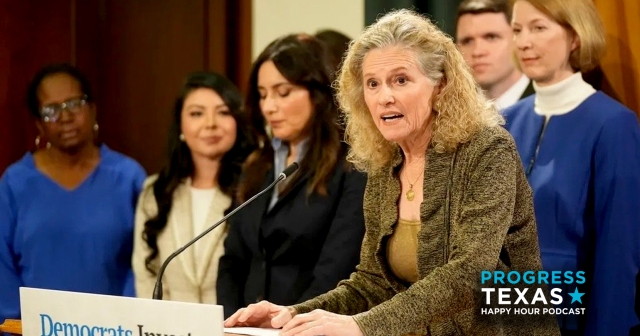The work that goes into the process extends far beyond what we see.
The committee process in the Texas Legislature goes far beyond what the public generally sees. It’s about providing public testimony and voting on bills, yes, but the work that goes into the process extends far beyond what we see. Visit this website to find a list of committees in the Legislature, examine what bills are sent to each committee, and to look at upcoming committee meetings.
Here’s a simple rundown of what goes on behind the scenes in committees of the Texas Legislature.
- Committee Structure: The number of committees in each chamber is established by the rules they pass. The presiding officer of each chamber – the Speaker in the Texas House, and the Lieutenant Governor in the Texas Senate – then assign Senators to each committee. A “Chair” is designated to run the committee, and is given a budget to hire staff to complete the ongoing work of the committee. Traditionally there is at least one Committee Clerk, who is like a Chief of Staff or manager for the committee, along with one or more assistant staff to help with the technical work of the committee. Committees are always made up of an odd number of legislators, to help avoid ties on any committee votes.
- Preparing for Session: Once a committee is named and the members are assigned, the Chair of the Committee will announce how the committee will work. The first sessions are traditionally hearings where state agencies who are involved with the committee’s work show up to testify about the current state of their agency. For example, the Senate Health and Human Services Committee and the House Public Health Committees will each hear, separately, from major state health agencies about the broad topic of health care. This serves two purposes: it allows new members of the Committee to get caught up on the fundamentals of the issue area, and it allows all members of the Committee to meet agency staff and ask questions that they want to see explored throughout the course of session.
- Which Bills Go To Which Committee: Once committee assignments are made, the presiding officer of each chamber begins referring bills to their respective committees. For a lot of bills, it’s pretty straightforward: a bill about prisons will go to the Criminal Justice committees, and a bill about taxes will go to the respective tax committees in each chamber. If a bill could go one of two ways – for example, if it has to do with a public health issue that also impacts public safety – then the presiding officer could send it to the health care committees, or to a criminal justice committee. Legislators can request that a presiding officer send certain bills to certain committees if they think their bill has a better chance of being passed out of one committee or another. One committee, the “State Affairs” committee in both the Senate and House, is used as a “catch-all” committee for large and often controversial bills.
- Setting up a Committee Hearing: Chairs of Committee set up rules in order for bills to be heard. For example, some Chairs may require that before they bring up a bill in committee a bill author would have to make a formal request for the bill to be heard. There may be a requirement for a certain number of copies of the bill and it’s supporting materials to be sent to committee members. Chairs can require potential witness lists, or state agency input, before they decide to set a hearing date for the committee. These small steps, though often behind the scenes, can make or break when a bill is heard by a committee – and, therefore, whether or not a bill has enough time to make its way through the full process of becoming a law.
- Hosting a Committee Hearing: Finally, the actual committee hearing! Committee chairs may require invited testimony for groups, state agency staff, or other experts they want to hear from on a particular bill or issue. Members of the public can also sign up to speak for, against, or on any piece of legislation that comes up in a committee process. Other than direct contact with legislators, this is the only opportunity for public input in the legislative process. For controversial bills, committee chairs may set a time limit for public testimony (often three minutes in length), not including question and answer time with the person speaking and with any committee members. Testimony can be provided in written form, as well. Committee clerks work before, during, and after the hearing to ensure all the proper rules about witness sign-ups are followed, that committee members have the paperwork they need, and that any and all education materials are properly shared and distributed.
- What Happens After Committees Vote: It is very rare for bills to pass out of committee the same day they come up for a hearing, especially if it’s on a bill or issue that the committee had not previously heard testimony for at any previous point of the session. Normally committee chairs give members at least a week, sometimes more, to consider the testimony they have heard. During that time, committee members may meet with the chair and/or bill author to talk about potential fixes or changes to the legislation. Stakeholder groups and other policy and political experts may write amendments to the original bill that allow it to move out of committee and to the floor of the Senate or House. Once the bill author and committee are on the same page for the legislation, the author may return to offer a “committee substitute” for the bill that addresses any compromises negotiated, and the committee will take a vote to pass it on to the next stage of the legislative process.
DONATE
Your donation supports our media and helps us keep it free of ads and paywalls.









